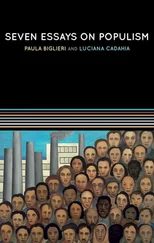Paul Graham - Essays
Здесь есть возможность читать онлайн «Paul Graham - Essays» весь текст электронной книги совершенно бесплатно (целиком полную версию без сокращений). В некоторых случаях можно слушать аудио, скачать через торрент в формате fb2 и присутствует краткое содержание. Жанр: Прочая околокомпьтерная литература, на английском языке. Описание произведения, (предисловие) а так же отзывы посетителей доступны на портале библиотеки ЛибКат.
- Название:Essays
- Автор:
- Жанр:
- Год:неизвестен
- ISBN:нет данных
- Рейтинг книги:4 / 5. Голосов: 1
-
Избранное:Добавить в избранное
- Отзывы:
-
Ваша оценка:
- 80
- 1
- 2
- 3
- 4
- 5
Essays: краткое содержание, описание и аннотация
Предлагаем к чтению аннотацию, описание, краткое содержание или предисловие (зависит от того, что написал сам автор книги «Essays»). Если вы не нашли необходимую информацию о книге — напишите в комментариях, мы постараемся отыскать её.
Essays — читать онлайн бесплатно полную книгу (весь текст) целиком
Ниже представлен текст книги, разбитый по страницам. Система сохранения места последней прочитанной страницы, позволяет с удобством читать онлайн бесплатно книгу «Essays», без необходимости каждый раз заново искать на чём Вы остановились. Поставьте закладку, и сможете в любой момент перейти на страницу, на которой закончили чтение.
Интервал:
Закладка:
Within the US, the two cities I think could most easily be turned into new silicon valleys are Boulder and Portland. Both have the kind of effervescent feel that attracts the young. They're each only a great university short of becoming a silicon valley, if they wanted to.
A great university near an attractive town. Is that all it takes? That was all it took to make the original Silicon Valley. Silicon Valley traces its origins to William Shockley, one of the inventors of the transistor. He did the research that won him the Nobel Prize at Bell Labs, but when he started his own company in 1956 he moved to Palo Alto to do it. At the time that was an odd thing to do. Why did he? Because he had grown up there and remembered how nice it was. Now Palo Alto is suburbia, but then it was a charming college town-- a charming college town with perfect weather and San Francisco only an hour away.
The companies that rule Silicon Valley now are all descended in various ways from Shockley Semiconductor. Shockley was a difficult man, and in 1957 his top people-- "the traitorous eight"-- left to start a new company, Fairchild Semiconductor. Among them were Gordon Moore and Robert Noyce, who went on to found Intel, and Eugene Kleiner, who founded the VC firm Kleiner Perkins. Forty-two years later, Kleiner Perkins funded Google, and the partner responsible for the deal was John Doerr, who came to Silicon Valley in 1974 to work for Intel.
So although a lot of the newest companies in Silicon Valley don't make anything out of silicon, there always seem to be multiple links back to Shockley. There's a lesson here: startups beget startups. People who work for startups start their own. People who get rich from startups fund new ones. I suspect this kind of organic growth is the only way to produce a startup hub, because it's the only way to grow the expertise you need.
That has two important implications. The first is that you need time to grow a silicon valley. The university you could create in a couple years, but the startup community around it has to grow organically. The cycle time is limited by the time it takes a company to succeed, which probably averages about five years.
The other implication of the organic growth hypothesis is that you can't be somewhat of a startup hub. You either have a self-sustaining chain reaction, or not. Observation confirms this too: cities either have a startup scene, or they don't. There is no middle ground. Chicago has the third largest metropolitan area in America. As source of startups it's negligible compared to Seattle, number 15.
The good news is that the initial seed can be quite small. Shockley Semiconductor, though itself not very successful, was big enough. It brought a critical mass of experts in an important new technology together in a place they liked enough to stay.
Of course, a would-be silicon valley faces an obstacle the original one didn't: it has to compete with Silicon Valley. Can that be done? Probably.
One of Silicon Valley's biggest advantages is its venture capital firms. This was not a factor in Shockley's day, because VC funds didn't exist. In fact, Shockley Semiconductor and Fairchild Semiconductor were not startups at all in our sense. They were subsidiaries-- of Beckman Instruments and Fairchild Camera and Instrument respectively. Those companies were apparently willing to establish subsidiaries wherever the experts wanted to live.
Venture investors, however, prefer to fund startups within an hour's drive. For one, they're more likely to notice startups nearby. But when they do notice startups in other towns they prefer them to move. They don't want to have to travel to attend board meetings, and in any case the odds of succeeding are higher in a startup hub.
The centralizing effect of venture firms is a double one: they cause startups to form around them, and those draw in more startups through acquisitions. And although the first may be weakening because it's now so cheap to start some startups, the second seems as strong as ever. Three of the most admired "Web 2.0" companies were started outside the usual startup hubs, but two of them have already been reeled in through acquisitions.
Such centralizing forces make it harder for new silicon valleys to get started. But by no means impossible. Ultimately power rests with the founders. A startup with the best people will beat one with funding from famous VCs, and a startup that was sufficiently successful would never have to move. So a town that could exert enough pull over the right people could resist and perhaps even surpass Silicon Valley.
For all its power, Silicon Valley has a great weakness: the paradise Shockley found in 1956 is now one giant parking lot. San Francisco and Berkeley are great, but they're forty miles away. Silicon Valley proper is soul-crushing suburban sprawl. It has fabulous weather, which makes it significantly better than the soul-crushing sprawl of most other American cities. But a competitor that managed to avoid sprawl would have real leverage. All a city needs is to be the kind of place the next traitorous eight look at and say "I want to stay here," and that would be enough to get the chain reaction started.
[1] It's interesting to consider how low this number could be made. I suspect five hundred would be enough, even if they could bring no assets with them. Probably just thirty, if I could pick them, would be enough to turn Buffalo into a significant startup hub.
[2] Bureaucrats manage to allocate research funding moderately well, but only because (like an in-house VC fund) they outsource most of the work of selection. A professor at a famous university who is highly regarded by his peers will get funding, pretty much regardless of the proposal. That wouldn't work for startups, whose founders aren't sponsored by organizations, and are often unknowns.
[3] You'd have to do it all at once, or at least a whole department at a time, because people would be more likely to come if they knew their friends were. And you should probably start from scratch, rather than trying to upgrade an existing university, or much energy would be lost in friction.
[4] Hypothesis: Any plan in which multiple independent buildings are gutted or demolished to be "redeveloped" as a single project is a net loss of personality for the city, with the exception of the conversion of buildings not previously public, like warehouses.
[5] A few startups get started in New York, but less than a tenth as many per capita as in Boston, and mostly in less nerdy fields like finance and media.
[6] Some blue counties are false positives (reflecting the remaining power of Democractic party machines), but there are no false negatives. You can safely write off all the red counties.
[7] Some "urban renewal" experts took a shot at destroying Boston's in the 1960s, leaving the area around city hall a bleak wasteland, but most neighborhoods successfully resisted them.
Thanksto Chris Anderson, Trevor Blackwell, Marc Hedlund, Jessica Livingston, Robert Morris, Greg Mcadoo, Fred Wilson, and Stephen Wolfram for reading drafts of this, and to Ed Dumbill for inviting me to speak.
(The second part of this talk became Why Startups Condense in America.)
Why Startups Condense in America
(This essay is derived from a keynote at Xtech.)
Startups happen in clusters. There are a lot of them in Silicon Valley and Boston, and few in Chicago or Miami. A country that wants startups will probably also have to reproduce whatever makes these clusters form.
I've claimed that the recipe is a great university near a town smart people like. If you set up those conditions within the US, startups will form as inevitably as water droplets condense on a cold piece of metal. But when I consider what it would take to reproduce Silicon Valley in another country, it's clear the US is a particularly humid environment. Startups condense more easily here.
Читать дальшеИнтервал:
Закладка:
Похожие книги на «Essays»
Представляем Вашему вниманию похожие книги на «Essays» списком для выбора. Мы отобрали схожую по названию и смыслу литературу в надежде предоставить читателям больше вариантов отыскать новые, интересные, ещё непрочитанные произведения.
Обсуждение, отзывы о книге «Essays» и просто собственные мнения читателей. Оставьте ваши комментарии, напишите, что Вы думаете о произведении, его смысле или главных героях. Укажите что конкретно понравилось, а что нет, и почему Вы так считаете.











